The Appalachian Mountains are a prominent mountain range in eastern North America, but the term “Appalachia” often refers to a broader, distinct region. Understanding where the Appalachian Mountains are requires exploring this expansive area, which stretches across 13 states and encompasses diverse landscapes and communities.
Appalachia, as defined by the Appalachian Regional Commission (ARC), is not just about the mountains themselves, but rather a 206,000-square-mile region spanning 423 counties. This area extends from southern New York all the way down to northern Mississippi. It’s home to approximately 26.4 million residents living within parts of Alabama, Georgia, Kentucky, Maryland, Mississippi, New York, North Carolina, Ohio, Pennsylvania, South Carolina, Tennessee, and Virginia, and includes the entirety of West Virginia.
This vast region is also culturally significant, encompassing three federally recognized and five state-recognized Native American tribal communities. These tribal entities are located within Appalachian Alabama, Georgia, Mississippi, New York, and North Carolina, highlighting the deep historical roots and diverse populations of Appalachia.
A Look at Appalachia’s Development
The Appalachian Regional Commission has played a crucial role in the region’s development since 1965. With nearly 34,000 targeted investments totaling over $5.65 billion, matched by an additional $11.7 billion from other sources, ARC has significantly impacted Appalachia. These investments have aimed to improve key socioeconomic factors, and while progress has been made, disparities persist.
While Appalachia has seen improvements in areas like poverty reduction, per capita income growth, and high school graduation rates, it still lags behind national averages in several socioeconomic indicators. Addressing challenges such as economic disruptions and the substance abuse crisis, and attracting private sector investment, remain critical for the region’s continued progress.
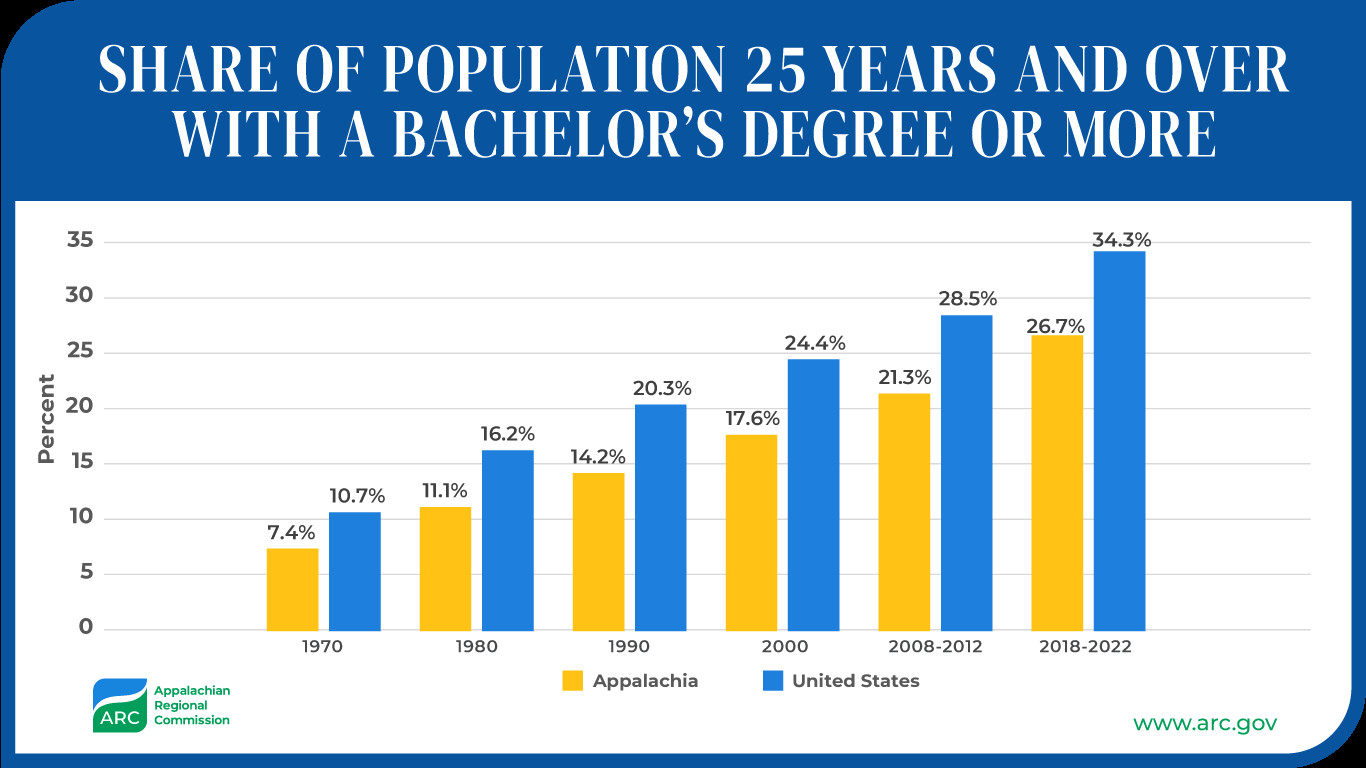 Share of Population 25 Years and Over with a Bachelor’s Degree or More
Share of Population 25 Years and Over with a Bachelor’s Degree or More
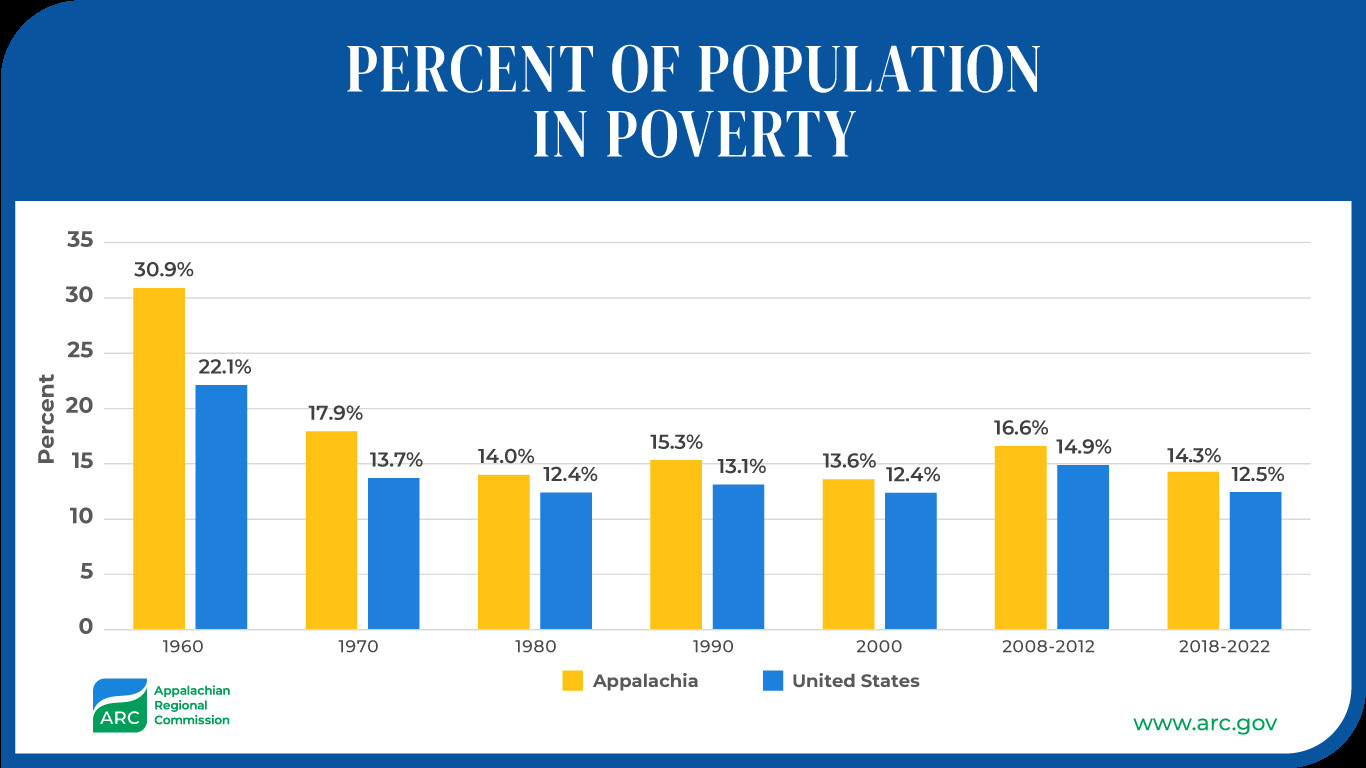 Percent Population in Poverty
Percent Population in Poverty
 Per Capita Personal Income 2022 Dollars
Per Capita Personal Income 2022 Dollars
Delving Deeper with The Chartbook
For a comprehensive understanding of Appalachia, “The Chartbook,” officially titled The Appalachian Region: A Data Overview from the 2018-2022 American Community Survey, is an invaluable resource. This report draws on the most recent American Community Survey and Census data, presenting over 300,000 data points. It covers a wide range of topics, including demographics, income, employment, education, computer access, and housing, at regional, subregional, state, and county levels.
Learn More

Appalachian States: A State-by-State View
The Appalachian region’s vastness is further understood by examining the 13 states that it encompasses. From the northern reaches in Southern New York to its southern end in Northern Mississippi, each state contributes uniquely to the Appalachian tapestry. Exploring each state individually provides deeper insights into the region’s diverse characteristics.
Select a State

Appalachian Counties: The Building Blocks of the Region
Within these 13 states, the Appalachian region is further defined by 423 counties. These counties are the fundamental units that shape the Appalachian landscape and communities. Understanding the specific counties included in Appalachia offers a granular perspective on the region’s geography and demographics.
Learn More
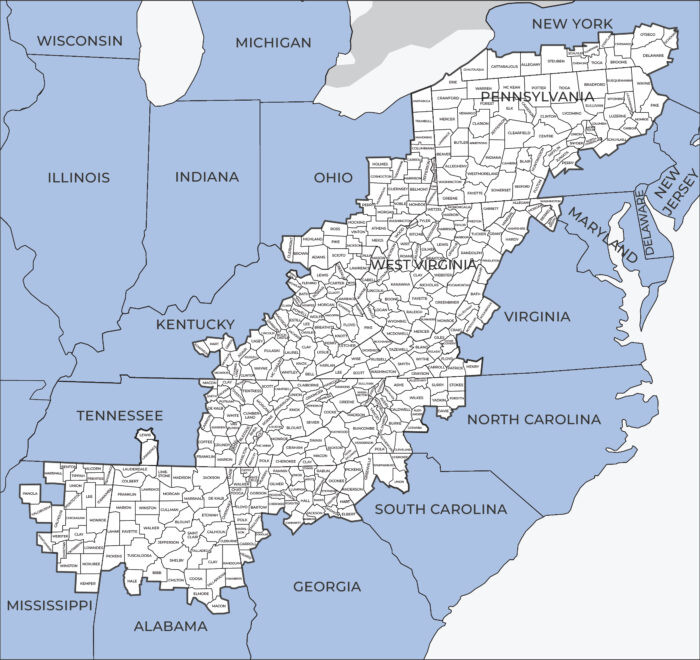
Economic Well-being Across Appalachian Counties
The Appalachian Regional Commission annually assesses the economic health of each county within the region using an index-based system. This classification of economic distress is crucial for ARC’s grant allocation and provides a way to track economic trends over time. Understanding the economic status of Appalachian counties is essential for targeted development efforts.
Learn More

Tribal Communities: An Integral Part of Appalachia
The presence of Native American tribal communities is a vital aspect of Appalachia’s cultural heritage. Encompassing both federally and state-recognized tribes, these communities contribute significantly to the region’s diversity and history. Learning about the tribal entities within Appalachia enriches our understanding of its multifaceted identity.
Learn More
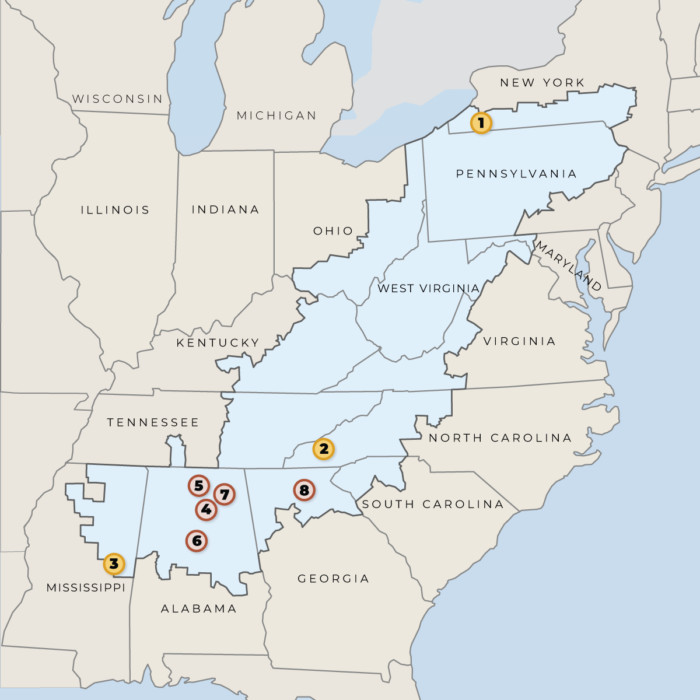
Congressional Representation in Appalachia
The Appalachian region is represented at the federal level by a significant number of elected officials. With 26 U.S. Senators and 61 members of the U.S. House of Representatives representing Appalachian constituents, the region’s voice is present in national policy-making. Examining the congressional districts within Appalachia reveals the political landscape of the area.
Learn More
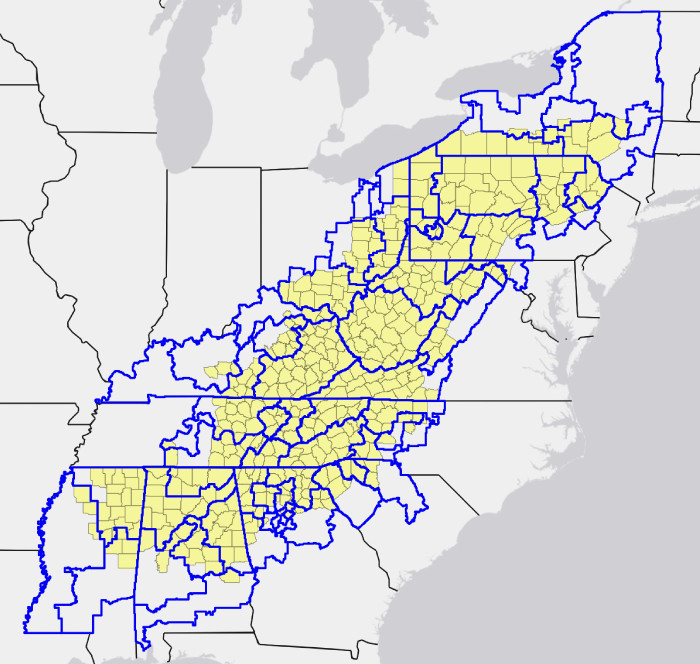
Local Development Districts: Driving Regional Growth
Local development districts (LDDs) are key organizations for fostering economic development at a community and regional level within Appalachia. These multi-county planning bodies, also known by various names, facilitate regionally-driven economic growth initiatives. With 74 LDDs operating in the Appalachian Region, they are crucial for implementing local development strategies.
Learn more
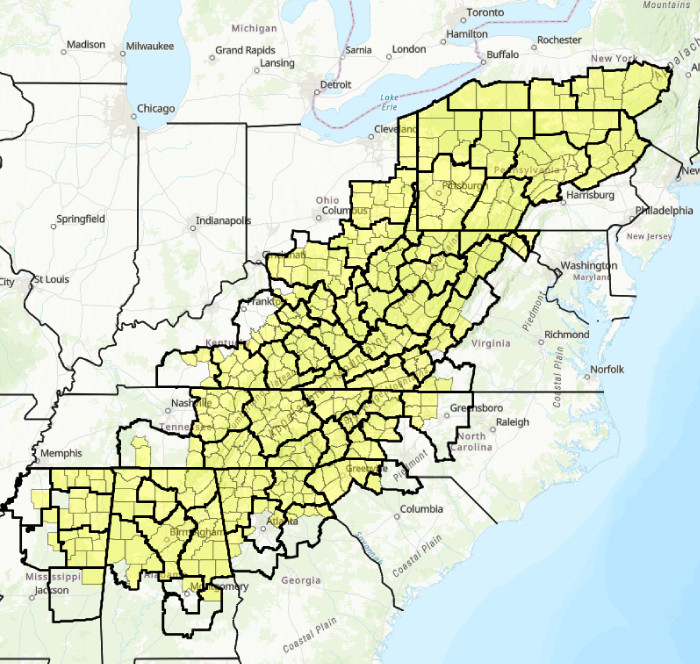
Understanding Appalachia’s Location
In conclusion, when we ask “where are the Appalachian Mountains?”, the answer extends beyond just pinpointing a mountain range. It involves understanding Appalachia as a broad region encompassing a vast geographical area across 13 states in the eastern United States. This region is defined not only by its mountains but also by its diverse communities, rich history, and ongoing development initiatives, all working together to shape the unique identity of Appalachia.


